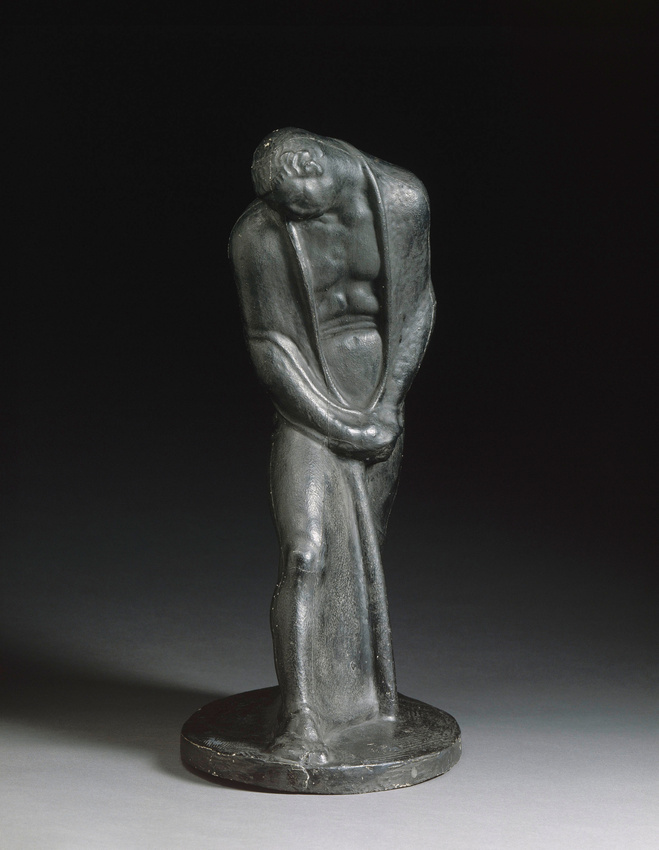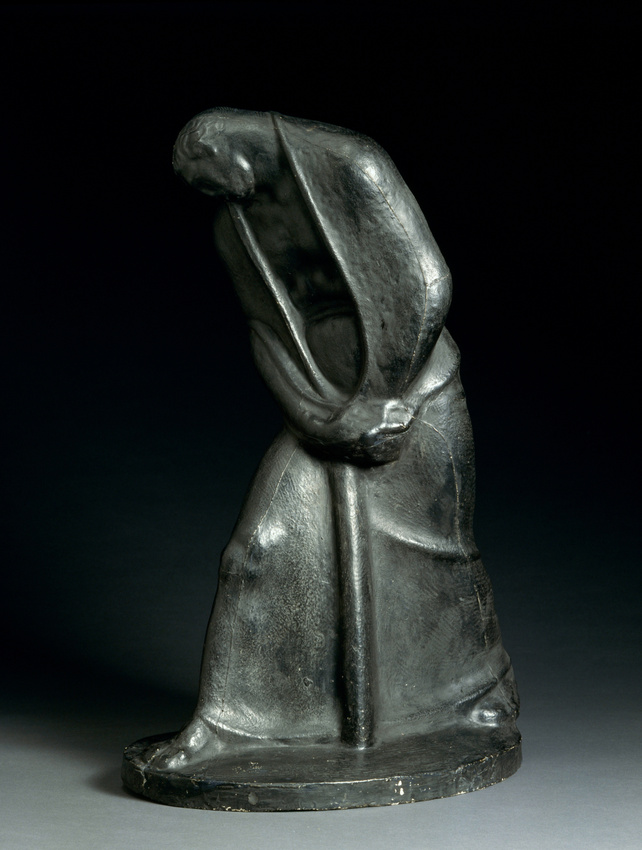Le Poids du chagrin
Metzner's style is derived both from Symbolism and the Viennese decorative arts. Der Leidtragende [The Weight of Grief] is a good example of the stylisation that prevailed at the turn of the 1910s but also exhibits intense expression and a deliberately mysterious or dramatic theme. The articulation of the shapes is strongly accentuated and the body is bowed in almost geometrical planes, scored by deep, clashing lines.
The Weight of Grief was made in a life-sized bronze version for a tomb; it illustrates the change at the end of the 1910s and made the artist famous. Metzner came from Bohemia but worked mainly in Berlin and Vienna. His sculptures enjoyed a degree of success at the Universal Exhibition in Paris in 1900 and from that time on critics took a real interest in him.
The provenance of this plaster statue is intriguing: it belonged to a Viennese architect who was very active in the Viennese Secession. Metzner frequented the artists involved in the Secession, particularly those who gravitated around the painter Klimt, and worked with many architects: like all these artists in the years before the war, he was keenly interested in the synthesis of the arts.

